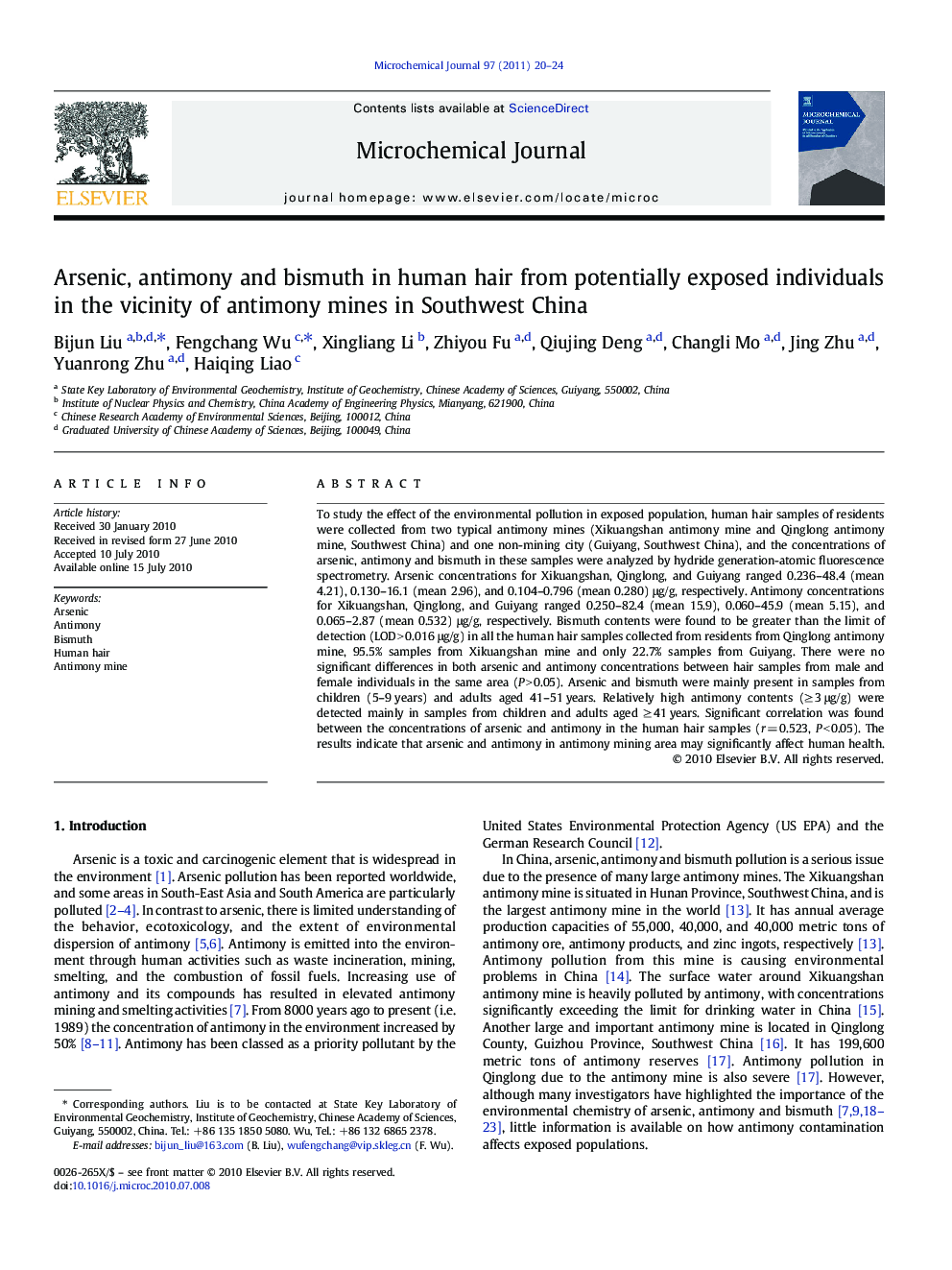| Article ID | Journal | Published Year | Pages | File Type |
|---|---|---|---|---|
| 1228241 | Microchemical Journal | 2011 | 5 Pages |
To study the effect of the environmental pollution in exposed population, human hair samples of residents were collected from two typical antimony mines (Xikuangshan antimony mine and Qinglong antimony mine, Southwest China) and one non-mining city (Guiyang, Southwest China), and the concentrations of arsenic, antimony and bismuth in these samples were analyzed by hydride generation-atomic fluorescence spectrometry. Arsenic concentrations for Xikuangshan, Qinglong, and Guiyang ranged 0.236–48.4 (mean 4.21), 0.130–16.1 (mean 2.96), and 0.104–0.796 (mean 0.280) μg/g, respectively. Antimony concentrations for Xikuangshan, Qinglong, and Guiyang ranged 0.250–82.4 (mean 15.9), 0.060–45.9 (mean 5.15), and 0.065–2.87 (mean 0.532) μg/g, respectively. Bismuth contents were found to be greater than the limit of detection (LOD > 0.016 μg/g) in all the human hair samples collected from residents from Qinglong antimony mine, 95.5% samples from Xikuangshan mine and only 22.7% samples from Guiyang. There were no significant differences in both arsenic and antimony concentrations between hair samples from male and female individuals in the same area (P > 0.05). Arsenic and bismuth were mainly present in samples from children (5–9 years) and adults aged 41–51 years. Relatively high antimony contents (≥ 3 μg/g) were detected mainly in samples from children and adults aged ≥ 41 years. Significant correlation was found between the concentrations of arsenic and antimony in the human hair samples (r = 0.523, P < 0.05). The results indicate that arsenic and antimony in antimony mining area may significantly affect human health.
